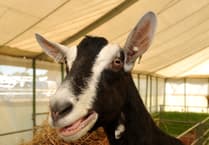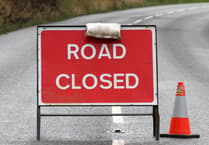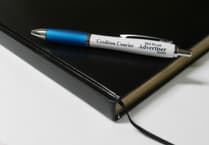THORVERTON History Society member Ian Stoyle stepped in at the last minute as a replacement speaker for the June meeting.
He last gave this talk about seven years ago when it was an actual walk around the village.
He started by showing an image of Thorverton river bridge being demolished in 1795. The painting was by a local vicar who earlier had described the village as a mean straggling town he had ridden through. There is a very good photo in the Exeter Inn of the demolition of a later bridge when the current bridge was being constructed.
The earliest existing map of the village was done in 1815 by Coleridge for the Ecclesiastical Commissioners who owned the village and the surrounding lands. Court Barton was the largest farm in the area. The basic shape of the village remained virtually unchanged until the last 50 years.
Starting our walk at the Women’s Institute hut we made our way to Cleaves Steps via Cleaves Close which was constructed in the 1950’s. Cleaves Steps replaced an earlier footpath and needed to be named so that Mid Devon District Council would keep the area clean. Then onto the Drill Hall, now renamed Courbert Close.
This was the centre for the District Yeomanry and their firing range can be seen on early OS maps.
The Barliabins footpath takes us past the field where the recent archaeological excavations took place. This is where a very old churt hand axe was found by a local historian and it was donated to the RAMM in Exeter.
Coming out into Dark Lane you have a lovely view of the church and the burial ground. Turning northwards down Dark Lane you will find the reservoir built in 1854 to provide cleaner water for the villagers following an outbreak of cholera.
The water was fed into the gutters or leats in Dinneford Street and Bullen Street. The work was done by Thomas Milford who was paid just under £18 for labour and materials.
At the bottom of the hill you can find the sheep dip. This was still in use up to the late 1960’s.
The site was very overgrown in the past but was cleaned up by the parish council. Prior to the sheep dip, this was the site of the village poor house and a charity school for about 80 children.
In the stream you can see the fender that was used for flushing the stream. Locals would empty their chamber pots and dispose of other refuse in the stream.
A barrier was lowered into the stream to build up a head of water and then released to flush it all away and out of the village. This stream is known locally as the Jordan but there is very little written evidence to support the name.
Turning back towards the centre of the village we pass the garage (now Victoria House), where you could buy petrol as well as get your car fixed.
The War Memorial records the names of men and one woman who lost their lives during the last two World Wars.
Dorothy White was a nurse and is the only woman recorded on a memorial in Devon.
The memorial is unusual in that the names are recorded alphabetically and according to rank.
The church naturally has much history and reminders of local people of the past. Some of the stained glass windows were installed in the memory of a lost loved one and a fuller history can be found from the leaflets available in the church.
Opposite the church is the old Bell Inn which closed some years ago. Next to the health centre was the shop of Edwin Short. Here you could buy grocery, clothing, stationery, coal and coke.
Next to this was a saddlers and opposite was Wardles Stores. This is now a private home but in the past was a bakery as well as a general store.
We go past the Berry Dairy to the Jubilee Green. At one time this had railings around it to stop children and dogs from going there. The railings were removed in the late 1960’s.
There were cottages fronting onto the steam but they were weakened by the 1875 flood and then demolished. A fir tree was planted in the Jubilee Green in 1887 to commemorate the Golden Jubilee of Queen Victoria but became too large for the site so was removed in 1946.
Beside the green is Bridge House, once the home of William and Joan Prouse but more recently the May family who ran the butcher’s shop for many years.
As Ian was running out of time he finished up with Acorn Cottage in Milford Lane. This is the only house in Devon built using cob bricks. The old Post Office has a blue plaque and was the home of the Cummings family from 1870 to 1974. The lamps at the Exeter Inn came from the old Exe Bridge in Exeter.
Robert Turner





Comments
This article has no comments yet. Be the first to leave a comment.